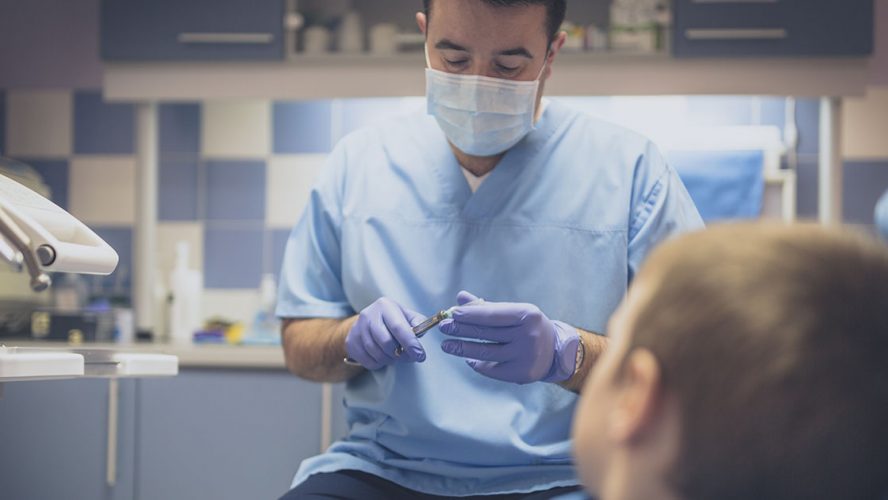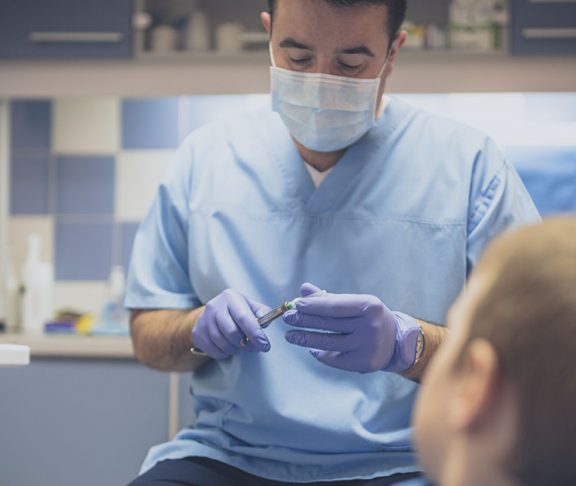Chancers are you’ve undergone a surgical procedure such as wisdom teeth removal by an oral and maxillofacial surgeon (OMS); so you likely had some form of anesthesia to help limit or prevent pain.
Whether it is a localized numbing anesthetic injected into the gum or inner cheek, nitrous oxide-oxygen, IV sedation or even a general anesthetic, the drugs make it possible to perform even complex surgeries in an OMS office with little or no discomfort for the patient.
Procedures and anesthestic delivery are done in an office-based setting. Because of this, they typically cost less than if the surgery were done in a hospital or outpatient surgery center.
Qualifications
OMSs are well-suited for providing anesthetics because of their extensive training and experience because:
- Beyond dental school, OMSs undergo at least four years of training in medical management, patient assessment, anesthesia delivery, procedural pain management and postsurgical care. The residency involves five months of dedicated training treating both adult and pediatric patients.
- Practicing OMSs keep their skills up-to-date by taking continuing education classes, participating in certification programs and undergoing office anesthesia evaluations. The American Association of Oral and Maxillofacial Surgeons (AAOMS) established its Office Anesthesia Evaluation Program in 1975. This was done to ensure practicing members maintain a properly equipped office, and are prepared to use accepted techniques for managing emergencies and complications of anesthesia in treating patients in office-based settings. AAOMS members are required to successfully complete the OAE program every five years. In addition, AAOMS has developed a simulation program for its members to practice and master techniques for administering and monitoring office-based anesthesia, emergency airway management and office crisis drills.
- OMSs use the anesthesia team model. This has been in place for more than 60 years, to provide safe and cost-effective anesthesia. At a minimum, the team consists of the OMS surgeon, a surgical assistant and an anesthesia assistant, whose sole responsibility is to monitor the patient and maintain the airway. The team model follows the guidelines outlined in AAOMS’s Parameters of Care. This publication outlines criteria for patient selection, equipment, monitoring, emergency management and discharge. To determine if they are suitable for office-based anesthesia, patients are evaluated based on medical history, exercise tolerance and airway.
With their thorough and ongoing training, OMSs have expert knowledge in administering anesthesia during office-based procedures.

